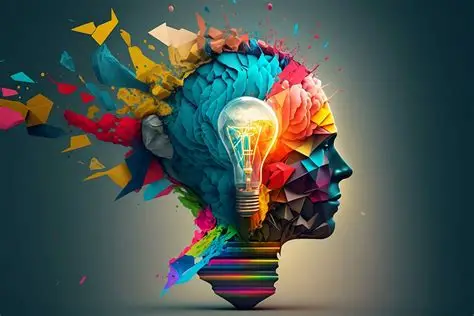
Branding has always been about connection — the ability to tell a story that resonates, builds trust, and creates loyalty. For decades, that story was crafted by human creativity alone. But today, artificial intelligence (AI) is reshaping the way brands think, design, and engage. Smart branding, powered by AI, is not just about technology; it’s about collaboration between data-driven systems and human insight.
In this evolving landscape, AI becomes less of a tool and more of a creative partner — one that analyzes behavior, predicts trends, and helps brands express their identities with precision and speed. This partnership between machine intelligence and human strategy marks a new era in marketing: one where creativity is amplified, not replaced.
The Rise of Smart Branding
The concept of smart branding emerges from the intersection of creativity and computation. As consumers become more informed and selective, brands must stay relevant by understanding not just what people want, but why they want it.
AI makes this possible. Through vast data analysis, it decodes human behavior, identifying emotional cues and purchasing patterns that shape more personalized experiences. From logo creation to content strategy, AI-driven systems allow marketers to design with intent rather than guesswork.
Brands no longer rely solely on traditional focus groups or intuition. Instead, they combine human creativity with AI’s analytical power, creating campaigns that adapt in real time to shifting market demands.
How AI Enhances Brand Creativity
AI isn’t replacing designers, writers, or strategists. It’s extending their abilities. By processing millions of data points in seconds, AI tools can inspire new ideas, streamline production, and uncover connections that might otherwise go unnoticed.
For example, AI-powered design platforms can generate multiple logo variations based on a single concept, giving creative teams a broad visual spectrum to explore. Similarly, copywriting algorithms analyze tone, sentiment, and engagement metrics to help brands refine their messaging for different audiences.
Even in storytelling, AI can assist. By understanding audience demographics and cultural nuances, it can suggest plotlines or brand narratives likely to resonate. This means less time on repetitive work — and more time focusing on originality, emotion, and strategy.
The result? A stronger, more cohesive brand identity that feels human — because it’s guided by both art and intelligence.
 Why Human Expertise Still Matters
Why Human Expertise Still Matters
AI can process information, but it cannot replace judgment. Smart branding thrives on nuance — something that algorithms alone can’t fully grasp. Emotional resonance, cultural sensitivity, and brand authenticity require a human touch.
This is where strategic partnerships come into play. For example, working with a professional SEO agency can help brands integrate AI insights into an overarching marketing plan that remains consistent, ethical, and creative. An experienced team can interpret AI-driven data, align it with search behavior, and craft strategies that truly connect with audiences.
The collaboration between AI and human expertise ensures that branding efforts are both intelligent and empathetic. Without that balance, even the smartest systems can misinterpret intent or miss emotional depth.
Personalization at Scale
Personalization has become a non-negotiable element of modern branding. Customers expect brands to “know” them — to deliver recommendations, content, and experiences that align with their individual needs.
AI excels in this area. Through machine learning, it processes real-time customer interactions to predict future behavior. Whether it’s adjusting product suggestions, tailoring ad copy, or customizing visual content, AI ensures that every touchpoint feels uniquely crafted.
This kind of large-scale personalization was once impossible for human teams to execute efficiently. Now, brands can maintain intimacy while reaching thousands — even millions — of customers simultaneously.
Still, successful personalization relies on balance. The data must inform the message, not dictate it. The human element — empathy, tone, and storytelling — remains irreplaceable.
From Data to Design: AI’s Role in Visual Branding
Visual identity lies at the heart of brand recognition. AI-driven tools are now redefining how logos, layouts, and even color palettes are conceptualized and refined.
By analyzing engagement metrics, AI can identify which designs attract attention, evoke emotion, or boost conversion rates. This insight helps creative teams make informed aesthetic decisions.
Some platforms even use generative AI to develop brand visuals based on values or mission statements, ensuring design aligns with the brand’s emotional core.
Yet, human oversight is critical. AI may recognize patterns, but humans assign meaning. The ideal approach is a creative collaboration — AI provides the data and inspiration, and humans transform that insight into authentic visual storytelling.
The Ethical Dimension of AI Branding
As AI continues to shape brand experiences, ethical considerations are becoming increasingly important. Brands must ensure that data collection and algorithmic decisions respect privacy and transparency standards.
Consumers today are not passive recipients — they are aware of how their data is used. Any misuse or perceived manipulation can harm trust, no matter how innovative a campaign appears.
Responsible brands use AI as a partner, not a puppeteer. They prioritize clarity in messaging, obtain consent before collecting data, and use insights to enhance user experience, not exploit it.
Ethical AI branding also includes inclusivity. Algorithms must be trained on diverse datasets to prevent bias in content, visuals, or representation. Only then can smart branding truly reflect the diversity of its audience.
Collaboration: The Future of Creativity
The future of branding is collaborative. AI provides the analytical foundation; humans bring intuition and meaning. Together, they can build brands that are not only efficient but deeply emotional.
Already, AI is shaping campaign ideation, customer journey mapping, and even sound design. It can predict which color evokes calm or excitement, which words inspire confidence, or which tone converts best in a social post.
However, the ultimate creative direction still comes from human vision. Machines can simulate style, but they cannot dream.
The future will likely see creative teams adopting hybrid workflows — part automated, part human-driven — where every project begins with insight and ends with emotion. The brands that embrace this duality will stand out in a crowded marketplace.
Challenges of Integrating AI in Branding
Despite its benefits, AI adoption comes with challenges. Cost, training, and data quality all play roles in determining success. Many brands struggle to implement AI meaningfully, either due to limited resources or lack of strategic understanding.
Another challenge lies in over-reliance. When brands depend too heavily on automation, they risk losing their unique voice. AI can guide and assist, but when it dominates, branding becomes mechanical and detached.
To overcome this, brands must invest in education — helping creative teams understand how to interpret AI insights while maintaining human originality. Integration should feel seamless, not forced.
Measuring the Impact of AI on Brand Performance
AI doesn’t just create — it measures. Smart systems track engagement rates, sentiment analysis, and conversion data in real time. This feedback allows marketers to adjust strategies instantly, keeping brands agile and responsive.
Beyond metrics, AI helps identify patterns that reveal deeper truths. For example, it can highlight which storytelling approaches resonate with different demographics or which visuals boost emotional response.
When used effectively, these insights turn branding from a one-time effort into a living system — evolving, learning, and improving continuously.
Conclusion
Artificial intelligence has transformed from a technical innovation into a creative companion. Smart branding is no longer about replacing human creativity, but about enhancing it — making it faster, more precise, and more informed.
The brands that succeed in this new era will be those that embrace collaboration. They will let AI handle the data, while humans handle the emotion. Together, they will craft stories that are not only intelligent, but deeply human.
In the end, smart branding is not about machines thinking like us. It’s about teaching machines to help us think better — to imagine, to create, and to connect more meaningfully than ever before.

 Why Human Expertise Still Matters
Why Human Expertise Still Matters

